Indoor Air Quality Instruments/ Equipments
Indoor Air Quality Instruments/ Equipments #1:
Carbon Monoxide Meter
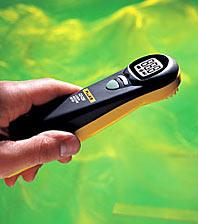 It is believed that every year 50-60 people die because of CO poisoning and were injured by unknowingly inhaling this colorless, odorless gas. It is known as “Silent Killer” as its effects are very slow but for longer period, it can become fatal for the occupants inside the building.
It is believed that every year 50-60 people die because of CO poisoning and were injured by unknowingly inhaling this colorless, odorless gas. It is known as “Silent Killer” as its effects are very slow but for longer period, it can become fatal for the occupants inside the building.
It enters into RBC (Red blood cells) and takes place of Oxygen. Further, it enters into the organs like brains, lungs and heart. Moderate levels can cause severe headaches, breathing problems, vomiting, burning eyes etc.
Nonetheless, Carbon Monoxide Meter makes it easy to take quick and accurate measurements of CO levels with a single compact instrument. Featuring the newest generation of electrochemical sensors, it responds very quickly to ambient changes in carbon monoxide concentration without the use of a pump.
Indoor Air Quality Instruments/ Equipments #2:
Particle Meter
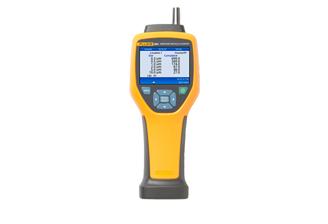 These are actually divided into 2 major parts as PM(Particulate Matter) 10 and PM 2.5. PM 10 is gases, which can be apparently being seen like dusts, smoke etc. PM 10 is less harmful but infects the lungs if inhaled for an even moderate period. Occupants having respiratory problems can find it very difficult to survive inside.
These are actually divided into 2 major parts as PM(Particulate Matter) 10 and PM 2.5. PM 10 is gases, which can be apparently being seen like dusts, smoke etc. PM 10 is less harmful but infects the lungs if inhaled for an even moderate period. Occupants having respiratory problems can find it very difficult to survive inside.
PM 2.5 is more dangerous than PM 10. As it is 2.5 times thinner than hair. It is more harmful as we cannot even see it. For e.g. Forest smoke, gases from vehicles etc. People with respiratory issues cannot inhale it for even few minutes even. It directly enters into our reparatory tract and reaches the lungs, making breathing hardly possible.
Particulate matter meters from filter testing to IAQ investigations, it is the portable solution for determining airborne particle concentrations. Its function is to monitor industrial clean rooms, pre-screen indoor air quality, locate particle sources for remediation.
Indoor Air Quality Instruments/ Equipments #3:
Carbon Di-oxide Meter
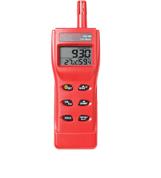 Being considered as one of the Greenhouse Gases, it colorless and odorless at lower concentrations. Nonetheless, on a higher side it can become more dangerous and harmful as it has sharp and acidic odor. In corporate areas, there is immense number of occupants inside. People breathe out CO2 in large amount. Outside air is also carrying CO2 in different quantities as the season varies accordingly. It comes inside via AHUs, which circulates the air outside in. The contaminants also come along with the same air, which affects the occupants inside, as there is no way for the contaminants to go out.
Being considered as one of the Greenhouse Gases, it colorless and odorless at lower concentrations. Nonetheless, on a higher side it can become more dangerous and harmful as it has sharp and acidic odor. In corporate areas, there is immense number of occupants inside. People breathe out CO2 in large amount. Outside air is also carrying CO2 in different quantities as the season varies accordingly. It comes inside via AHUs, which circulates the air outside in. The contaminants also come along with the same air, which affects the occupants inside, as there is no way for the contaminants to go out.
When it comes to Indoor Air Quality, CO2 is known as “canary in the mineshaft”. High levels of CO2 mean more VOCs and more microorganisms. In addition to quality of air, CO2 can be very harmful and affect the health of the occupants severely. A general survey has brought to notice that CO2 can lower down the concentrations in performing any tasks. For E.g. Sleeping in office or classrooms.
As far as the CO2 meter is concerned, it has instant feedback with CO2 levels, with additional temperature and humidity measurement. Built in alarm warns against dangerous CO2 levels. The portable CO2 Meter is designed to measure air quality compliance in occupied spaces such as offices, production floors, schools or hospitals.
Indoor Air Quality Instruments/ Equipments #4:
Nitrogen Di-oxide meter
 NO2 is extremely toxic gas and inflammable gas. A yellowish brown gas with pungent smell. It can be found in industries wherein DGs are used, as it is the most toxic component in it. It causes irritation of eyes, throat and gradual loss of strength. High exposure might cause lung disease, severe coughing, choking, headache, abdominal pain and even death. It is more prominent in air pollution. Occupants living beside busy traffic roads are exposed and are affected by NO2 severely, which increases the respiratory allergic reactions. People experience it from breathing it form the polluted air.
NO2 is extremely toxic gas and inflammable gas. A yellowish brown gas with pungent smell. It can be found in industries wherein DGs are used, as it is the most toxic component in it. It causes irritation of eyes, throat and gradual loss of strength. High exposure might cause lung disease, severe coughing, choking, headache, abdominal pain and even death. It is more prominent in air pollution. Occupants living beside busy traffic roads are exposed and are affected by NO2 severely, which increases the respiratory allergic reactions. People experience it from breathing it form the polluted air.
NO2 meter makes it possible to monitor nitrogen dioxide vapor in air. The instrument has an LCD display giving concentrations in ppm, a low battery indicator, and an audible alarm that can be set at any level from0-20ppm.
Indoor Air Quality Instruments/ Equipments #5:
Sulphur Di-Oxide Meter
NO2 is extremely toxic gas and inflammable gas. It is highly toxic as it poisons the victim via inhaling the gas and burning the respiratory tract goes to the lungs. High dose can even cause death eventually. It causes chronic and acute effects to work exposure as well. Inhaling in large amount of SO2 can make the person go for pulmonary disease for lifetime. In fact, increase in dose can affect the respiratory tract to the limit that it can permanently destroy the same.
Current scientific evidence links SO2 exposure with adverse impacts on the respiratory system. In recent reviews of the standard, EPA has determined that even short-term exposure to high levels of SO2 can have a detrimental effect on breathing function, particular for those that suffer from asthma.
SO2 meter can provide exact reading via it sensors. Every individual equipment provides an effective and concrete reading, which eventually evaluates the level or amount of SO2 present in the atmosphere. Based on the reading precautions can be taken care well before hand and eventually saving the occupants.
Indoor Air Quality Instruments/ Equipments #6:
Total volatile organic compounds meter
 TVOCs are compounds, which gets releases from new wall furnishings, new furniture, paints etc. Formaldehyde gets release from the paints from the walls. As the boiling point of VOC’s is -19 degree Celsius, which is very low, hence, the molecule is evaporated in a very low temperature. The occupants whose workstations are beside the new furniture or cabins will inhale the same, which has the same.
TVOCs are compounds, which gets releases from new wall furnishings, new furniture, paints etc. Formaldehyde gets release from the paints from the walls. As the boiling point of VOC’s is -19 degree Celsius, which is very low, hence, the molecule is evaporated in a very low temperature. The occupants whose workstations are beside the new furniture or cabins will inhale the same, which has the same.
Occupants inhaling the VOCs can feel breathing problem inside the premises until they are in. The moment they are out, they would feel better. Continuous exposure might lead to loose of concentrations, irritation while breathing eventually it leads to poor work performance per day.
Major VOC sources in buildings include furnishings, construction materials, maintenance and infiltration of external contaminants. Adverse comfort or health effects that may be experienced by building occupants, particularly those who are sensitive to indoor air contaminants, include headaches and irritation to the eyes, nose, skin and throat.
Indoor Air Quality Instruments/ Equipments #7:
Relative Humidity:
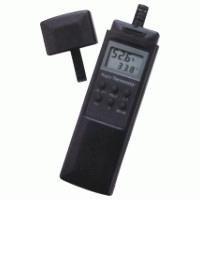 It is the mass of water vapor divided by the mass of dry air in the volume in the air at particular temperature. It depends on pressure and temperature. Humans are very sensitive to humidity, as the skin relies on the air to get rid of moisture. If the relative humidity is high, it is obvious that we feel more heat than the normal and sweats does not come to our body. If the relative humidity is low, we feel much cooler than the actual temperature as our sweat evaporates eventually in the air. Same conditions go with occupants, as inside temperature is different from the temperature outside. Relative humidity differs accordingly.
It is the mass of water vapor divided by the mass of dry air in the volume in the air at particular temperature. It depends on pressure and temperature. Humans are very sensitive to humidity, as the skin relies on the air to get rid of moisture. If the relative humidity is high, it is obvious that we feel more heat than the normal and sweats does not come to our body. If the relative humidity is low, we feel much cooler than the actual temperature as our sweat evaporates eventually in the air. Same conditions go with occupants, as inside temperature is different from the temperature outside. Relative humidity differs accordingly.
Usually, relative humidity should be between 30% and 60%. If there is a problem with humidity, it tends to be because it is too low and the air feels ‘dry’. This can be improved by having indoor plants to humidifiers. Low relative humidity in the work place can cause soar eyes and throat etc.
Hygrometer is used to measure the moisture content in the atmosphere. It is also depended on other source like temperature, pressure etc. This practical and convenient pocket instrument accurately measures and displays temperature and relative humidity simultaneously.
Indoor Air Quality Instruments/ Equipments #8:
Hydrogen Sulphide meter
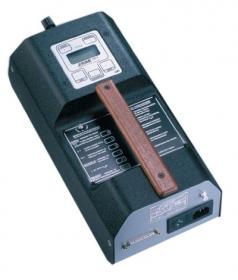 It is colorless, highly poisonous, extremely toxic, potentially flammable gas, which has rotten egg odor. It can affect various organs of the body. It destroys most of the organs, although occupants’ nervous systems can be poisoned. This gas affects several body systems simultaneously. Long period of exposure can lead to fatigue, headache, irritability, dizziness etc. High exposure can even lead to respiratory paralysis as few minutes of breathing it occupants can feel loss of breathing.
It is colorless, highly poisonous, extremely toxic, potentially flammable gas, which has rotten egg odor. It can affect various organs of the body. It destroys most of the organs, although occupants’ nervous systems can be poisoned. This gas affects several body systems simultaneously. Long period of exposure can lead to fatigue, headache, irritability, dizziness etc. High exposure can even lead to respiratory paralysis as few minutes of breathing it occupants can feel loss of breathing.
Inhalation at certain concentrations can lead to injury of death. Hydrogen sulfide is an extremely toxic, flammable gas that may be encountered in the production of gas crude oil, associated gas, and waters. Since hydrogen sulfide is heavier than air, it can collect in low places.
The meter provides specific reading on the levels of H2S released eventually. The sensor captures the amount of H2S released in a specified area and provides accurate and concrete result accordingly.
Indoor Air Quality Instruments/ Equipments #9:
Temperature meter
 According to Health and Safety Executive different views has been provided regarding the temperature inside a workroom. It has to be 16 degree Celsius until there is no physical work associated or else it shall go to 13 degree Celsius. According to WHO (World Health Organization) the temperature shall be not more than 24 degree Celsius maximum.Temperature meter is one of the instruments used in Indoor Air Quality Instruments.
According to Health and Safety Executive different views has been provided regarding the temperature inside a workroom. It has to be 16 degree Celsius until there is no physical work associated or else it shall go to 13 degree Celsius. According to WHO (World Health Organization) the temperature shall be not more than 24 degree Celsius maximum.Temperature meter is one of the instruments used in Indoor Air Quality Instruments.
For monitoring all temperature measurement technology used in industrial applications, building technology etc. These equipments actually read the level of temperature at which occupants are working. As temperature fluctuates with pressure and relative humidity as well, a reading of relative humidity is also taken to calculate the level of temperature. Pressure, temperature and relative humidity are all interdependent for any sort of Indoor air calculations.
Indoor Air Quality Instruments/ Equipments #10:
Ozone meter
Ozone is actually generated in the Earth’s Stratosphere where Sun’s high ultraviolet rays encounter the Earth’s atmosphere. Ozone by itself is harmful for the human health and skin. Direct exposure of Ozone can lead to severe skin issues. It actually reacts with Oxygen and produce oxides of oxygen, O3. Printers, fax machines, Xerox machines etc, emits Ozone which is oxidized by the air (Oxygen) and can be very harmful if inhaled by the occupants.
Equipments like electrochemical sensors, UV photometry can be used to measure high levels of Ozone inside the workplace and not susceptible to drift.
In case, you want to check Indoor Air Quality Parameters, Click Here
Summary:
Here is the complete list of Indoor Air Quality Instruments:
1) CARBON MONOXIDE METER
2) PARTICLE METER
3) CARBON DI-OXIDE METER
4) NITROGEN DI-OXIDE METER
5) SULPHUR DI-OXIDE METER
6) TOTAL VOLATILE ORGANIC COMPOUNDS METER
7) RELATIVE HUMIDITY
8) HYDROGEN SULPHIDE METER
9) TEMPERATURE METER
10) OZONE METER


